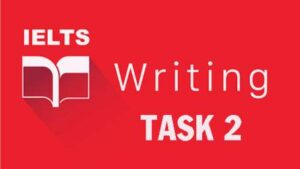Mastering effective strategies to interpret and present IELTS graph data is crucial for success in the IELTS writing exam – Learn how to excel with our expert guidance.
Table of Contents
ToggleBest Way to Approach Academic IELTS WritingGraphs: Tips and Strategies
By Mr. DayaaShunnkar

As an aspiring IELTS test-taker, you may find Writing Graph to be challenging, but fret not! In this blog post, we’ll provide you with valuable tips and strategies that will help you write a winning essay and ace your IELTS Writing Graph (Task 1).
Read on to find out more!
The Most Asked Question:
IELTS WRITING GRAPH “ACADEMIC” IS THE FIRST SECTION OF THE IELTS WRITING TEST, WHICH REQUIRES CANDIDATES TO INTERPRET AND SUMMARIZE DATA PRESENTED IN THE FORM OF GRAPHS, TABLES, CHARTS, OR DIAGRAMS.
- READ THE INSTRUCTIONS CAREFULLY TO UNDERSTAND THE TASK REQUIREMENTS.
- SPEND TIME ANALYZING THE DATA AND IDENTIFYING KEY TRENDS AND PATTERNS.
- ORGANIZE YOUR ESSAY WITH AN INTRODUCTION, BODY PARAGRAPHS, AND CONCLUSION.
- USE APPROPRIATE VOCABULARY AND SENTENCE STRUCTURES TO ACCURATELY DESCRIBE THE DATA.
- ENSURE THAT YOUR ESSAY IS COHERENT AND EASY TO READ.
- PRACTICE IELTS WRITING GRAPH UNDER TIMED CONDITIONS TO IMPROVE YOUR SPEED AND EFFICIENCY.
TOPIC
1. Understand the task requirements
2. Use appropriate vocabulary and sentence structures
3. Analyze the data effectively
4. Practice regularly
5. Organize your essay
6. Conclusion
RESPONSES
You should carefully read the directions and the graph itself to determine the type of graph and the particular information it provides in order to comprehend the requirements for the IELTS graph task. Next, you must conduct an analysis of the data to spot any major patterns, distinguishing characteristics, and noteworthy variations or similarities, making sure to support your conclusions with precise comparisons and explanations.
You should closely read the title and axis labels, recognise the major trends and key features, compare and contrast, use appropriate language, and summarise the data to analyse IELTS graph data effectively. These stages will assist you in coming to meaningful conclusions and producing a precise and well-organized response to the assignment.
You should first plan and arrange your ideas into distinct paragraphs with a distinct introduction, body, and conclusion in order to organise content in the IELTS writing graph. Then, in order to make your arguments and ensure a logical flow, you should use appropriate language and transitional words. At the same time, you should make sure to back up your statements with precise information and examples from the graph.
You should try to use a variety of words and phrases that accurately describe the data while avoiding repetition or overly complicated language in order to use good vocabulary and sentence structures in IELTS graphs. Additionally, you should strive to use grammatically sound, varied sentence patterns while also making sure that your writing is unambiguous, succinct, and well-structured.
Finding and analysing a variety of graphs from various sources, such as newspapers, magazines, or scholarly journals, is a good way to practise composing graphs for the IELTS exam. Then, you should practise writing answers to these graphs, concentrating on correctly describing the data, spotting patterns and key characteristics, using appropriate language, and putting your thoughts into a clear and concise order.

CONCLUSION
WITH THE RIGHT APPROACH, INTERPRETING AND SUMMARIZING DATA IN IELTS WRITING GRAPH (TASK 1) CAN BE MANAGEABLE. BY FOLLOWING THE TIPS AND STRATEGIES OUTLINED IN THIS BLOG POST, YOU CAN IMPROVE YOUR PERFORMANCE AND ACHIEVE YOUR DESIRED SCORE ON THE IELTS EXAM. REMEMBER TO PRACTICE REGULARLY AND BE CONFIDENT IN YOUR ABILITIES TO TACKLE ANY GRAPH THROWN YOUR WAY.

Here is how
to Master the skill of writing graphs for IELTS
- Familiarize yourself with the different types of graphs that appear on the IELTS exam. The most common types are line graphs, bar graphs, pie charts, tables, and diagrams.
- Practice analyzing the graphs. You should be able to identify the main trends, compare and contrast different aspects of the graph, and make predictions about future trends.
- Work on your language skills. You should be able to use a range of vocabulary to describe the data, including synonyms and paraphrasing. You should also be able to use different sentence structures to express your ideas.
- Practice organizing your ideas. You should have a clear introduction, body, and conclusion. The body should be organized logically, with each paragraph focusing on a different aspect of the graph.
- Use time wisely. You will have limited time to complete the writing task, so practice writing under timed conditions. Use a timer and try to complete the task within the time limit.
- Get feedback on your writing. Have someone with experience in IELTS writing review your work and provide feedback. This will help you identify areas for improvement and refine your skills.
- Practice, practice, practice. The more you practice, the more comfortable you will become with the format and structure of IELTS writing tasks. Make sure to practice writing about different types of graphs to increase your familiarity with different formats.

Frequently Asked Questions
In IELTS Academic Writing Task 1, line graphs are frequently used and are generally straightforward to interpret. For instance, the provided graph displays the population of India and China since 2000 and projects population growth until 2050.
To optimize your IELTS writing score, ensure to present all significant trends in one overview paragraph instead of dividing them into different paragraphs. This overview statement should include the key increases and decreases depicted in the data. By doing so, you’ll be able to provide a concise and well-structured response.
To excel in IELTS Academic Writing Task 1, provide a clear introduction, summarize the key features with figures, and support your description with relevant data.
To succeed in IELTS writing, understand the task structure and band descriptors, use strong vocabulary and grammar, develop organized ideas, manage time effectively, and write in formal language.
Bar graphs, pie charts, and line graphs are 3 common types of graphs used to show different types of data. Bar graphs are good for comparing quantities, pie charts are useful for showing percentages, and line graphs help illustrate trends over time.
Mr. DayaaShunnkar is an accomplished educator with 17+ years of experience in enhancing academic performance and honing language skills for students. His passion for teaching and commitment to his students have earned him a reputation as a dedicated and effective educator.













































